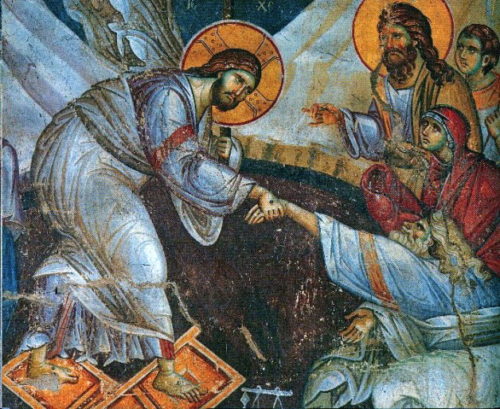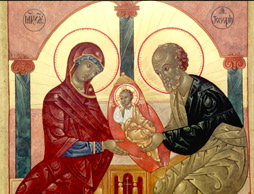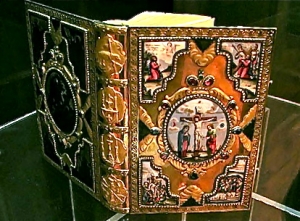
Scriptural Readings for Great and Holy Week
Saturday of Lazarus John 11, 1 – 4
Christ Entry into Jerusalem John 12, 1 – 18. (Palm Sunday)
Bridegroom Service Matthew 21, 18 – 43.
(Palm Sunday Evening)
Bridegroom Service Matthew 22, 15 – 46; 23, 1 – 39.
(Holy Monday Evening)
Bridegroom Service John 12, 17 – 50.
(Holy Tuesday Evening)
Sacrament of Holy Unction 1st. Epistle – James 5, 10 – 16.
1st. Gospel – Luke 10, 25 – 37.
2nd. Epistle – Romans 15, 1 – 7.
2nd. Gospel – Luke 19, 1 – 10.
3rd. Epistle – Corinthians 12, 27 – 31; 13, 1- 8.
3rd. Gospel – Matthew 10, 1, 5 – 8.
4th. Epistle – Corinthians 6, 16 – 18; 7, 1.
4th. Gospel – Matthew 8, 14 – 23.
5th. Epistle – Corinthians 1, 8 – 11.
5th. Gospel – Matthew 25, 1 – 13.
6th. Epistle – Galatians 5, 22 – 6: 2
6th. Gospel – Matthew 15, 21 – 28
7th. Epistle – I Thessalonians 5, 14 – 23
7th. Gospel – Matthew 9, 9 – 13
Bridegroom Service Luke 22, 1 – 39 (Holy Wednesday Evening)
(Great and Holy Thursday Morning)
Vesporal Liturgy of St. Basil The Great
The Institution of the Holy Eucharist
The Gospel Reading is a composite:
Matthew 26, 2 – 20; John 13, 3 -17; Matthew 26, 21 – 39; Luke 22, 43 – 45; Matthew 26, 75 + 27, 1 – 2
Great and Holy Thursday Evening, – The Service of the Twelve Gospels
-
-
-
- COMPOSITE READING: John 13, 31 – 38 + 14, 1 – 31 + 15, 1 – 27 + 16,1 – 33 + 17, 1 – 26 +18, 1.
- John 18, 1 – 28.
- Matthew 26, 57 – 75.
- John 18, 28 – 40 + 19, 1 – 16.
-
-
5. Matthew 27, 3 – 32.
Procession with the Blessed Cross
6. Mark 15, 16 – 31.
7. Matthew 27, 33 – 54.
8. Luke 23, 32 – 49.
9. John 19, 25 – 37.
10. Mark 15, 43 – 47.
11. John 19, 38 – 42.
12. Matthew 27, 62 – 66.
Great and Holy Friday:
The Royal Hours Gospel of the First Hour:
Matthew 27, 1 – 56.
Gospel of the Third Hour
Mark 15, 16 – 41.
Gospel of the Sixth Hour
Luke 23, 32 – 49.
Gospel of the Ninth Hour
John 19, 23 – 37.
The Vespers The Taking Down from the Cross
(The Apokathelosis)
Matthew 27, 1 – 38; Luke 23, 39 – 43;
Matthew 27, 39 – 54; John 19, 31 – 37;
Matthew 27, 55 – 61.
The Lamentations (Matins for Holy Saturday)
Matthew 27, 62 – 66.
Great and Holy Saturday The Divine Liturgy of St. Basil the Great
Matthew 28, 1 – 20.
Sunday of Holy Pascha
The Resurrection Service Mark 16, 1 – 8.
The Divine Liturgy of Pascha
John 1, 1 – 17. The Vespers of Love (The Agape Vespers) John 20, 19 – 25.

Christ is Risen




